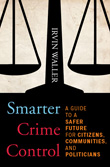 There are three keys to large and sustained reductions in gang related violence within a short time. Firstly, good diagnosis must precede implementing a solution. Secondly, the police cannot do it alone; they must work with schools, job trainers, youth workers and engaged citizens. Thirdly success must be demonstrated from evaluations of reductions in violence, not just arrests or drug seizures.
There are three keys to large and sustained reductions in gang related violence within a short time. Firstly, good diagnosis must precede implementing a solution. Secondly, the police cannot do it alone; they must work with schools, job trainers, youth workers and engaged citizens. Thirdly success must be demonstrated from evaluations of reductions in violence, not just arrests or drug seizures.
We expect doctors to diagnose our problem before prescribing the remedy but too often expect – wrongly – the traditional law enforcement and criminal justice system to reduce crime without a diagnosis. The experts know that the diagnosis must involve both the police service and agencies such as schools, housing and youth services. It must engage parents and neighbours so that it has public support. The diagnosis must lead to investments to solve the problem – equivalent new money into both policing and social prevention targeted to those at risk.
Many politicians and articles in the media think prevention is going to take too long. They confuse political announcements of more police with actual boots on the street which does not happen instantly. Yet, many of the programs known to be proven by the US Department of Justice and so on, such as youth inclusion programs, mentoring, assistance to complete grade 12, job training can be implemented in priority zones as quickly as hiring more police.
The impressive success in the 1990´s of Boston in eliminating gang related homicides in some categories occurred within two years of the actions being implemented but these followed two years or so of diagnosis by both police and public health. The mistake of Boston was to abandon the funding of education and job training when there was short term success. Not surprisingly, the problems came back in the 2000´s.
The equally impressive success of Chicago in the 2000´s ascribed to the appointment of Dr. Slutkin in charge of public health and described in the documentary The Interrupters was achieved within five years. The models in Glasgow and Alberta are also based on achieving large reductions within four to five years.
In terms of results, we must not confuse arrests and seizures of guns and drugs as proof of reductions in violence. While arrests may lead to reductions, they are not the same thing. Arrests may only temporarily incapacitate the individual arrested. Offenders put away for long periods may just provide an opening for another offender. Evaluations must look at the key outcomes of violence prevention which are reductions in homicides and shootings.
If political leaders and police chiefs apply the lessons from Boston, Chicago and the proven practices, then reductions of 50% in these homicides and shootings are possible. If they ignore this evidence in cities such as Newark, Toronto or Mexico, then they will not get reductions in the short or long term.

